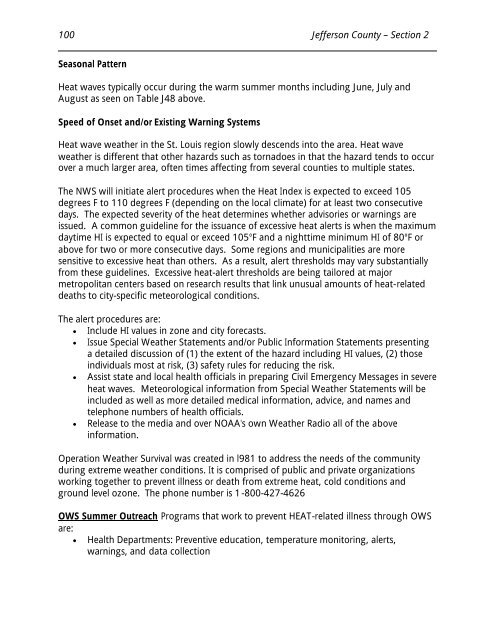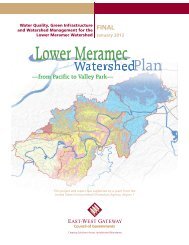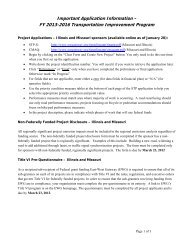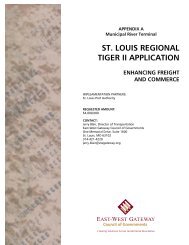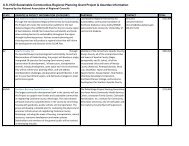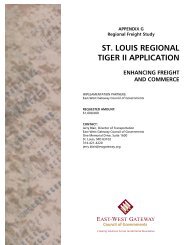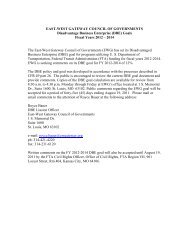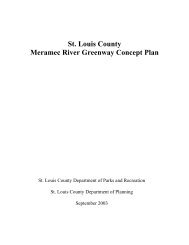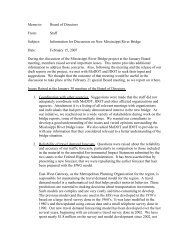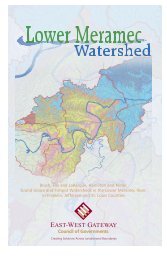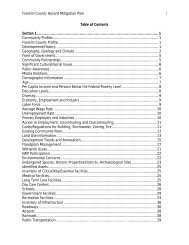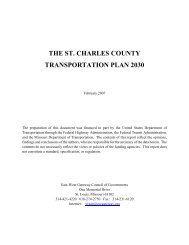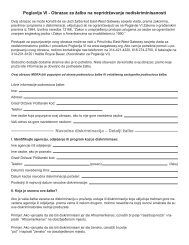Jefferson County - East-West Gateway Coordinating Council
Jefferson County - East-West Gateway Coordinating Council
Jefferson County - East-West Gateway Coordinating Council
You also want an ePaper? Increase the reach of your titles
YUMPU automatically turns print PDFs into web optimized ePapers that Google loves.
100<br />
Seasonal Pattern<br />
<strong>Jefferson</strong> <strong>County</strong> – Section 2<br />
Heat waves typically occur during the warm summer months including June, July and<br />
August as seen on Table J48 above.<br />
Speed of Onset and/or Existing Warning Systems<br />
Heat wave weather in the St. Louis region slowly descends into the area. Heat wave<br />
weather is different that other hazards such as tornadoes in that the hazard tends to occur<br />
over a much larger area, often times affecting from several counties to multiple states.<br />
The NWS will initiate alert procedures when the Heat Index is expected to exceed 105<br />
degrees F to 110 degrees F (depending on the local climate) for at least two consecutive<br />
days. The expected severity of the heat determines whether advisories or warnings are<br />
issued. A common guideline for the issuance of excessive heat alerts is when the maximum<br />
daytime HI is expected to equal or exceed 105°F and a nighttime minimum HI of 80°F or<br />
above for two or more consecutive days. Some regions and municipalities are more<br />
sensitive to excessive heat than others. As a result, alert thresholds may vary substantially<br />
from these guidelines. Excessive heat-alert thresholds are being tailored at major<br />
metropolitan centers based on research results that link unusual amounts of heat-related<br />
deaths to city-specific meteorological conditions.<br />
The alert procedures are:<br />
• Include HI values in zone and city forecasts.<br />
• Issue Special Weather Statements and/or Public Information Statements presenting<br />
a detailed discussion of (1) the extent of the hazard including HI values, (2) those<br />
individuals most at risk, (3) safety rules for reducing the risk.<br />
• Assist state and local health officials in preparing Civil Emergency Messages in severe<br />
heat waves. Meteorological information from Special Weather Statements will be<br />
included as well as more detailed medical information, advice, and names and<br />
telephone numbers of health officials.<br />
• Release to the media and over NOAA's own Weather Radio all of the above<br />
information.<br />
Operation Weather Survival was created in l981 to address the needs of the community<br />
during extreme weather conditions. It is comprised of public and private organizations<br />
working together to prevent illness or death from extreme heat, cold conditions and<br />
ground level ozone. The phone number is 1-800-427-4626<br />
OWS Summer Outreach Programs that work to prevent HEAT-related illness through OWS<br />
are:<br />
• Health Departments: Preventive education, temperature monitoring, alerts,<br />
warnings, and data collection


